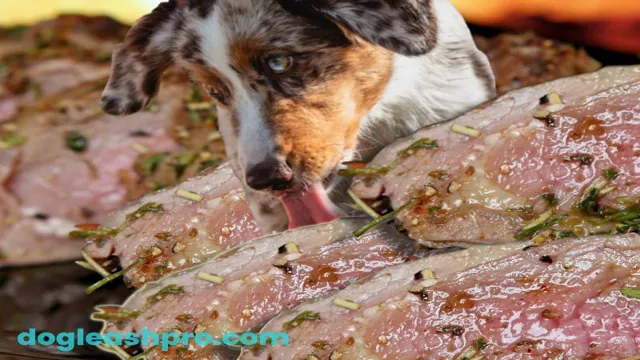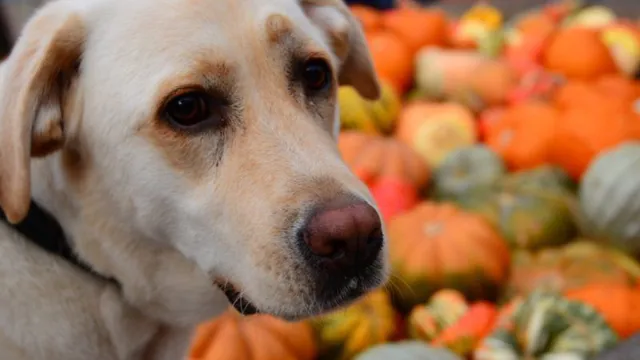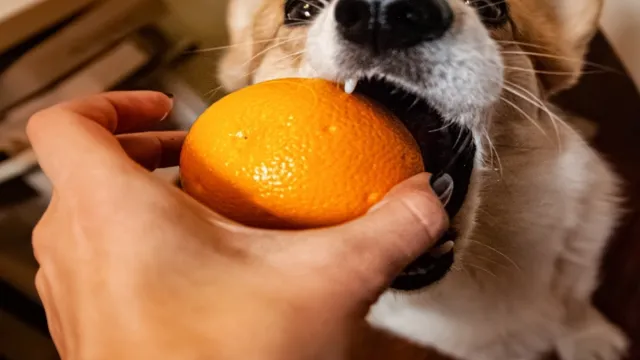What Age Can Puppies Safely Eat Bones? A Guide for Dog Owners
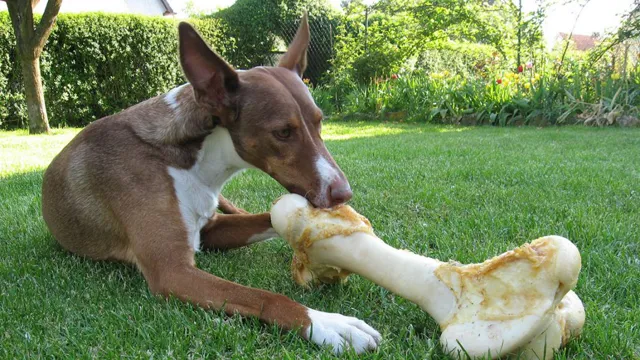
Are you wondering whether it is safe for your pup to chew on bones? Many dog owners are confused about this topic and the safety of bones for their canine friends. Bone-chewing can provide numerous benefits to dogs, such as improved dental health and mental stimulation. However, it’s important to know that not all bones are safe for your pup and some can even be dangerous. In this blog post, we’ll discuss when it is safe for dogs to eat bones and provide you with tips for selecting the right type of bone for your dog.
Types of Bones Dogs Should Avoid
We all know that dogs love to chew on bones. However, there are some types of bones that dogs should avoid. Bones can cause serious digestive issues, choking hazards, and even broken teeth. Therefore, it’s important to know which types of bones should not be given to our canine companions. Bones from large animals, such as cows, horses, and pigs, are especially dangerous for dogs.
These bones are large and hard, and they can easily splinter. Splintered bone fragments can damage your dog’s intestines and other organs. The same is true for cooked bones. Cooked bones become brittle and can easily splinter, so it’s best to avoid them. Bones from fish, poultry, and small animals, such as rabbits, are also unsafe for dogs.
These bones are softer and more likely to splinter, which can cause serious internal damage. It’s also important to avoid giving your dog bones from animals that have been sick. The bacteria from the sick animal can contaminate the bone, leading to an infection. Even bones that are labeled as “safe for dogs” should be avoided, as they are often treated with chemicals that can be toxic to your pet. It’s best to stick to giving your dog chew toys or treats that are specifically designed for him.
These items are safe, and they will help keep your dog’s teeth healthy and strong. If you are unsure about which bones are safe for your dog to eat, it’s best to consult your veterinarian. They will be able to provide you with the best advice and help ensure that your pup stays healthy and safe.
Rawhide Bones
When it comes to providing your pup with long-lasting, satisfying chew treats, you can’t go wrong with rawhide bones. These chewy treats are a favorite of many four-legged fur babies, but when can dogs safely eat bones? First and foremost, it’s important to remember that rawhide bones are not real bones. They are actually made from the inner hide of a cow, which is then compressed and formed into bone-like shapes. These treats are fully digestible, so they’re safe for your pup to enjoy. However, it’s still important that you monitor their chewing habits and remove any large chunks or pieces that may become a choking hazard.
In general, rawhide bones can be enjoyed by dogs of all ages. However, puppies, senior dogs, and dogs with dental problems should be monitored more closely when chewing on these treats. Ultimately, it’s best to consult your vet to determine if rawhide bones are the best chew treats for your pup’s individual needs.
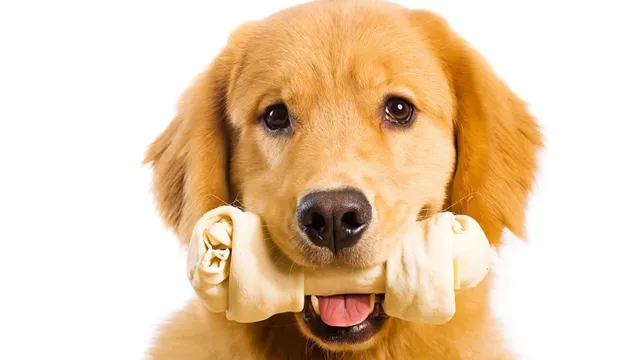
Cooked Bones
When it comes to feeding your pup, bones can be a contentious issue. While you may have heard that cooked bones are unsafe for your dog, the truth is that, in moderation, cooked bones can be a great source of nutrition for your canine companion. The key is to make sure the bones are fully cooked, as raw bones can splinter and cause harm to your pup. Additionally, it’s important to remember that bones should always be given as a treat and not as a meal, as too many bones can lead to gastrointestinal distress. So, when can dogs eat bones? As long as they’re cooked and given in moderation, bones can be a delicious and nutritious snack for your furry friend.
Types of Bones Dogs Can Eat
When it comes to the question of whether it’s safe for dogs to eat bones, the answer is a resounding yes – but only if they’re the right kind of bones. Not all bones are created equal when it comes to canine nutrition, so it’s important to know exactly which bones are safe for your pup to gnaw on. Raw bones are the best kind for dogs, as they contain the most nutrients and are the least processed. Raw bones can come from any type of meat, from beef to poultry to fish. These bones are loaded with essential vitamins and minerals, and are a great source of calcium and phosphorous.
Raw bones are also a great way to keep your pup’s teeth clean and healthy. Cooked bones, however, should be avoided. They’re more likely to splinter and cause choking or intestinal blockages, so it’s important to keep them away from your pup. It’s also important to make sure the bone is the right size for your dog. Too large of a bone can be dangerous, as your pup might not be able to chew it properly and could choke.
Bones that are too small can also be a choking hazard, so be sure to pick the right size for your pup. Finally, make sure to supervise your pup when they’re chewing on a bone. This will help ensure that they don’t choke or swallow any large pieces. In general, when it comes to bones, raw is the way to go for your pup. Not only are they packed with essential vitamins and minerals, but they’re also safe and healthy for your pup to enjoy.
Be sure to always supervise your pup when they’re gnawing on a bone, and make sure the bone is the right size for your pup. With a little care and attention, you can give your pup a delicious and nutritious
Raw Bones
When it comes to feeding your pup, there’s no doubt that you want to give them the best nutrition possible. One of the most popular options is to give them raw bones, but when can dogs eat bones?
The answer is that it depends on the type of bones you’re giving them. For instance, raw bones that are too small can cause a choking hazard, while bones that are too large can cause internal damage. Additionally, certain bones, such as those that come from pigs, can splinter and cause serious damage if ingested. Raw bones that are free from splinters, cracks, and sharp edges can be a delicious and healthy treat for your pup.It’s important to make sure that the bones are large enough that your pup cannot swallow them whole. Additionally, it’s important to supervise your pup while they’re enjoying their bone, as they can splinter into smaller pieces as they chew. Overall, raw bones can be a nutritious and enjoyable snack for your pup, as long as you make sure that they are the correct size and free from any sharp edges.
Bone Meal
When it comes to dogs, one question that often comes to mind is, “When can dogs eat bones?” While bones can be a great source of minerals and calcium for dogs, there are some risks associated with feeding them. As such, it’s important to understand when dogs can eat bones, and what precautions should be taken. In general, raw bones are much safer for dogs than cooked bones, as cooked bones can splinter and cause internal damage or digestive blockages. Additionally, large bones should be avoided, as they can be too hard for a dog to chew, increasing the risk of choking. It’s best to supervise your pup when they are eating bones, and to only give them bones that are appropriate for their size.
With the right precautions and safety measures in place, feeding your pup bones can be an enjoyable and beneficial activity.
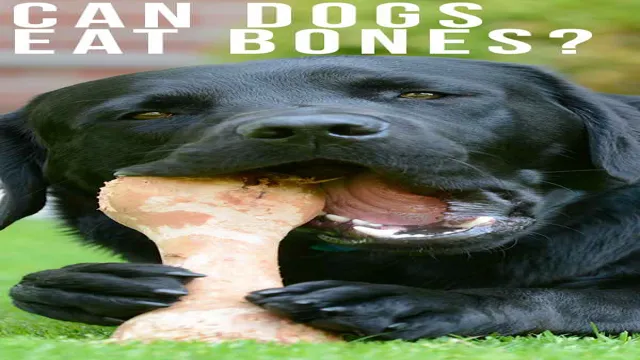
Organic Bones
Organic bones are a healthy and tasty treat for dogs, but it’s important to know when they can safely eat them. Bones are a great source of calcium and phosphorous, but they can also create a choking hazard if they are too small or not chewed properly. To ensure your pup’s safety, it’s important to only feed your dog bones that have been specifically designed for canine consumption. These bones are usually made from organic, natural materials and provide your pup with essential nutrients while being a tasty snack. Additionally, when giving your pup organic bones, it’s important to monitor their chewing habits, and make sure they don’t swallow large chunks.
Doing this will help ensure your pup stays healthy and safe, and can enjoy these tasty treats for years to come!
Safety Tips for Feeding Dogs Bones
When it comes to feeding our beloved pets, safety should always be the top priority. Dogs have been known to enjoy the occasional bone, but there are certain precautions that should be taken when feeding them bones. Bones can be dangerous for dogs if they are not given properly. Bones can splinter and cause choking or serious digestive issues, so it is important to ensure that you are giving your pup the right type of bone. Bones from cooked meals such as chicken, turkey, and beef should be avoided completely.
These bones easily splinter and can cause serious damage to your pup’s digestive system. Raw bones are much safer for dogs. These bones are softer and less likely to splinter, plus they are full of beneficial nutrients like calcium and phosphorous. Raw bones should be given in moderation and should always be monitored while your pup is chewing. If you notice any large pieces breaking off, remove it from your pet’s mouth immediately.
It is important to remember that all bones should be given in moderation. Too many bones can lead to an upset stomach, or worse, an intestinal blockage. Also, large bones should never be given to puppies, as their small size can make them more prone to choking. When it comes to feeding your pup bones, it is important to remember to do so safely. Avoid giving cooked bones, and opt for raw bones that are soft and easy to chew.
Monitor your pup while they are enjoying their treat, and don’t forget to provide lots of fresh water. With these simple precautions, you can help ensure that your pup has a safe and enjoyable experience.
Supervise Your Dog
Properly supervised dog owners know that when it comes to giving their pup something to chew on, bones are a popular choice. But do you know when it’s safe to give your pup bones to gnaw on? Knowing when your dog can safely eat bones is essential to keeping both your pup and your own sanity. Bones can provide entertainment and mental stimulation for your pup, but improper consumption can lead to serious risks. That’s why it’s important to know when your pup can safely eat bones. Generally speaking, the best time to give your pup bones is when he or she is around 6 months old and has all of their adult teeth.
This age range is the safest for your pup to start chewing on bones as their teeth are strong enough to handle the tougher material of a bone. However, it’s also important to make sure the bone is the right size for your pup. If it’s too big, it could be a choking hazard. If you’re ever unsure, it’s always best to speak to your vet for guidance.
Monitor Your Dog’s Health
Dogs are our beloved furry friends, and it’s important to keep an eye on their health. One way to do this is to know when it’s safe for them to eat bones. While bones can provide a great source of calcium and other vitamins, they can also be a choking hazard if not chewed properly. To ensure your pup stays safe and healthy, it’s essential to know when it’s okay for them to have a bone. Generally, it’s recommended to only offer large, raw bones to adult dogs, as their jaws and teeth are strong enough to handle them.
Puppies, on the other hand, should stick to softer, smaller bones that are easier to digest.
Conclusion
When it comes to dogs and bones, the old saying holds true: A bone a day keeps the vet away!”
FAQs
When can dogs eat bones?
Dogs can eat bones when they are raw and of a size appropriate for their size.
